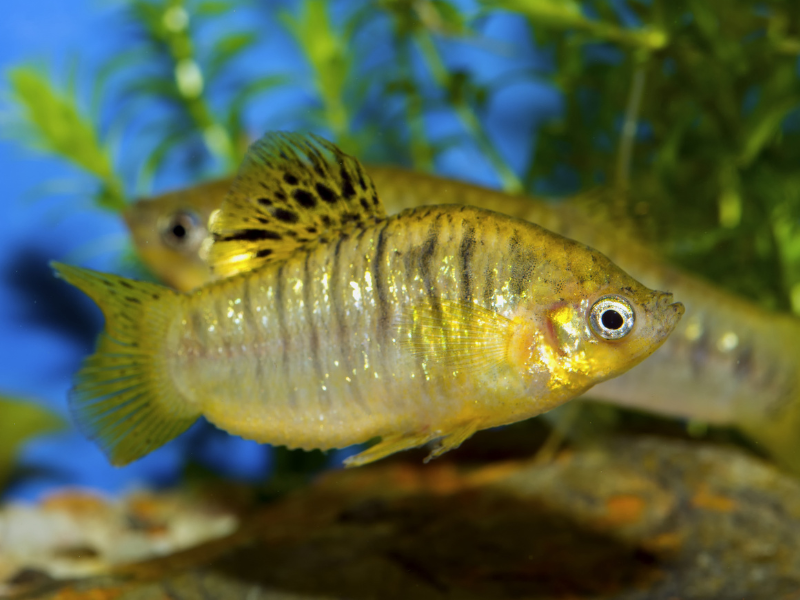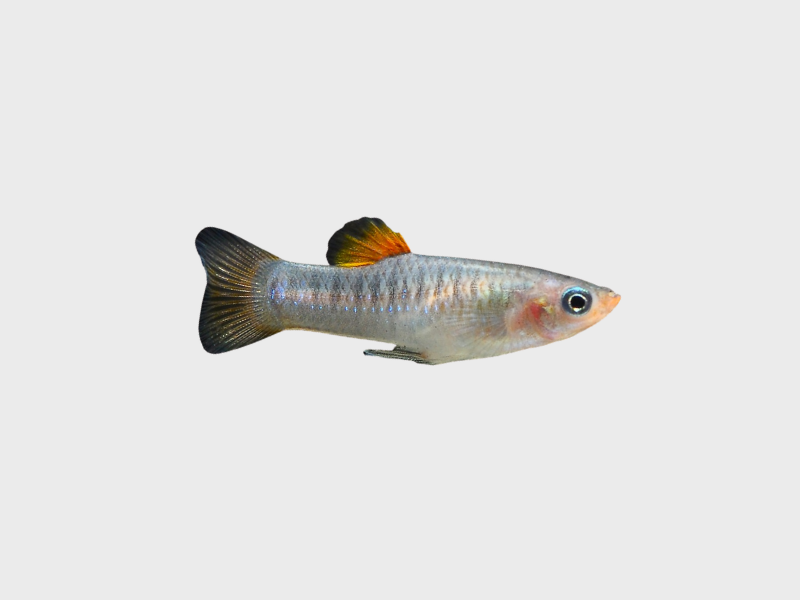Limia nigrofasciata
Humpback Limia

Scientific Classification
Quick Stats
Aquarium Building Information
About This Species
Basic Description
Detailed Description
The Humpback Limia is a fascinating livebearer endemic to the island of Haiti. In its native habitat, it occupies freshwater environments characterized by hard, alkaline water with a high mineral content and low flow, conditions that should be closely replicated in the home aquarium for optimal health. This species is designated as vulnerable in the wild, making captive-bred populations important for its continued presence in the hobby.
Setting up an aquarium for Humpback Limias requires attention to their active, schooling behavior. A group of six or more is essential to promote their natural social interactions and reduce stress. The tank should offer plenty of open swimming space, as they are fast swimmers that primarily inhabit the top and middle water columns. A secure lid is highly recommended to prevent jumping. While they appreciate some plant cover, especially for fry to hide in, the main focus should be on unobstructed swimming areas. A low-flow filter outlet is preferred to avoid creating strong currents they are not adapted to. Due to their preference for specific water chemistry, they are not suitable for typical soft-water community tanks; they thrive in conditions that would be stressful for many Amazonian species.
Their social dynamic is generally peaceful, but their constant activity can be disruptive to slow-moving or timid fish. Ideal tank mates include other robust, active species that appreciate similar hard water conditions, such as other Central American livebearers or rainbowfish. As omnivores with a healthy appetite, they are not picky eaters. A varied diet is key to their well-being, consisting of a high-quality staple flake or pellet supplemented with vegetable matter. They also relish frozen and live foods, which encourages their natural foraging behaviors. Interestingly, they are known to graze on biofilm, contributing to the aquarium's overall cleanliness. Regular daily feedings are necessary to support their medium metabolic rate.
Scientific Description
Limia nigrofasciata is a species of live-bearing fish belonging to the family Poeciliidae, a group that includes familiar genera such as Poecilia and Xiphophorus. Endemic to Haiti, this species occupies a specific ecological niche in freshwater habitats defined by significant mineral content, alkalinity, and minimal water flow. Its conservation status is listed as Vulnerable by the IUCN, highlighting concerns about its stability in its native range, likely due to habitat degradation.
Morphologically, L. nigrofasciata exhibits a body shape that is both fusiform (tapering at both ends) and compressiform (flattened from side to side). This hydrodynamic profile is an adaptation for its active, pelagic lifestyle in the upper and middle water columns. A key characteristic and the source of its common name is the pronounced nuchal hump that develops in mature males, a feature of significant sexual dimorphism within the species. Physiologically, it is well-adapted to environments with high levels of total dissolved solids and hardness. It also shows a slight tolerance for low-level salinity, a trait not uncommon in Poeciliids originating from coastal regions.
In its ecosystem, L. nigrofasciata functions as an omnivore. Its diet consists of small invertebrates, plant matter, and detritus. Its noted environmental interaction as a biofilm consumer indicates a role in nutrient cycling and substrate cleaning within its habitat. Despite being a constantly active species, it has a relatively low oxygen consumption rate and produces a correspondingly low amount of waste, resulting in a moderate bioload factor in aquaria. This efficiency, combined with its specific water chemistry requirements, paints a picture of a species highly specialized for its unique environmental conditions.
Breeding Description
Breeding the Humpback Limia is a moderately straightforward endeavor, typical of many fish in the Poeciliidae family. Success is highly probable for aquarists who can provide the correct environmental conditions. To encourage spawning and maintain a harmonious group, it is recommended to keep a higher ratio of females to males, such as one male for every two or three females. This ratio helps to disperse the male's persistent courtship displays, reducing stress on any single female.
Sexual dimorphism is quite pronounced in mature specimens, making sexing adults easy. Males are generally smaller and more slender than females. Most notably, adult males develop a prominent nuchal hump on their dorsal profile, which is the defining characteristic for which the species is named. Males also possess a gonopodium, a modified anal fin used for internal fertilization. Females are larger, fuller-bodied, and lack the distinctive hump.
As livebearers, Humpback Limias do not lay eggs. Following internal fertilization, the female gestates for several weeks before giving birth to a brood of fully formed, free-swimming fry. Like many livebearers, the adult fish exhibit no parental care and will readily predate on their young. To ensure a high survival rate, it is imperative to provide abundant cover for the fry. Dense thickets of fine-leaved plants, such as hornwort or Java moss, or floating plants with extensive root systems serve as excellent refuges. Alternatively, a gravid female can be moved to a separate, well-planted birthing tank and then removed once she has delivered her fry. The fry are born relatively large and can immediately consume powdered fry food, crushed flakes, and newly hatched brine shrimp. Providing multiple small feedings per day will promote healthy and rapid growth.
Generate Printable Card
Create a printable card for this creature to display in your store or aquarium. The card includes a QR code for quick access to more information.


